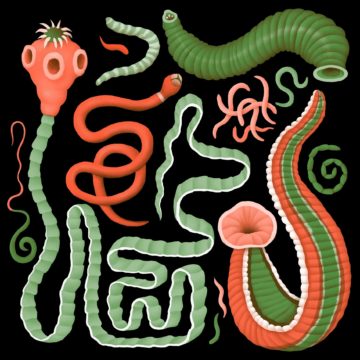Jerome Groopman in The New Yorker:
 A vacation in the Catskills, one of those beautiful summer days which seem to go on forever, with family friends down at a local pond. I must have been six. I waded around happily, in and out of the tall grasses that grew in the murky water, but when I emerged onto the shore my legs were studded with small black creatures. “Leeches! Don’t touch them!” my mother yelled. I stood terrified. My parents’ friends lit cigarettes and applied the glowing ends to the parasites, which exploded, showering me with blood.
A vacation in the Catskills, one of those beautiful summer days which seem to go on forever, with family friends down at a local pond. I must have been six. I waded around happily, in and out of the tall grasses that grew in the murky water, but when I emerged onto the shore my legs were studded with small black creatures. “Leeches! Don’t touch them!” my mother yelled. I stood terrified. My parents’ friends lit cigarettes and applied the glowing ends to the parasites, which exploded, showering me with blood.
Mom was right, up to a point. If you rip a leech off, you’ll probably leave its jaws behind in the skin, thereby heightening the risk of infection. But her friends’ remedy—back when people smoked, it was practically folk wisdom—isn’t advisable, either. A leech contains, in addition to your blood, plenty of things you don’t want in an open wound. There are ways to safely remove a leech, but almost any source you consult will also make a surprising suggestion: just leave it there. Once the creature has finished making a meal of you—in around twenty minutes—it will drop off, sated. In the meantime, the guest, however unwelcome, is likely doing you no harm. After all, treatment with leeches was a staple of medicine for millennia, and has even been resurgent in recent decades, in applications where the anticoagulant properties of leech saliva are beneficial.
More here.
